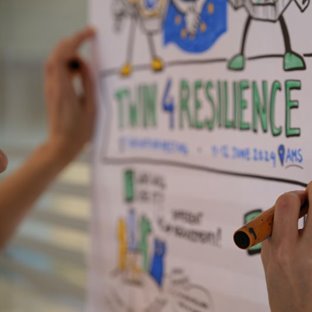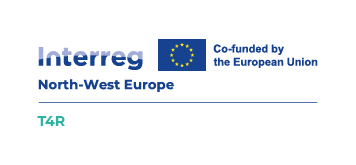Twin4Resilience
A digital twin (LDT) in 3D of the city or neighbourhood, helps both policy makers and citizens to better understand what the spatial planning could look like in the context of the grand societal challenges we are facing together, such as climate, energy, housing and green cities.In the green and digital transition, local and regional governments are confronted with an ever-more complex decision-making environment for spatial planning. To bring about resilience and a proper living standard, local and regional governments require systemic innovation and decision processes.
LDT's are virtual 2D or 3D representations of a given territory, such as a city. They are created by modelling and simulation technology based on datasets and data models. LDTs are the building blocks of systemic innovation. Currently, LDT technology and high-quality datasets are even available for communities with lower budgets. Many cities are already experimenting with LDTs. However, the characteristics and maturity of their experiments vary greatly. Their development and application are hampered by a lack of understanding of what an LDT is and how they can help in spatial planning. This results in a lack of evidence for the impact of LDTs, and therefore a lack of political support for their use, which leads to fewer means to increase innovational capacity – especially with the government.
The European project Twin4Resilience (T4R) is not concerned with the development of the technology, but with increasing the capacity of people (and thus of policy and governance) to properly handle transitions. T4R will drastically increase the research and innovation capacities of more than 130 organisations, enabling them to better deal with complex challenges in the field of spatial planning.
The goals of Twin4Resilience
IIn T4R, partners are collaborating towards the following goals:• Create more skills and competencies among civil servants, companies involved with spatial development and planning, and citizens, and more awareness of the opportunities and limitations of LDTs.
• Increase the number of local and regional governments that use LDTs in an inclusive, democratic, affordable and sustainable way in their decision processes, thereby increasing their resilience and improving living standards.
• Narrowing the gap between cities that implement LDTs (early adopters), those who try to do this (followers) and those who are not (yet) aware of the potential of LDTs.


